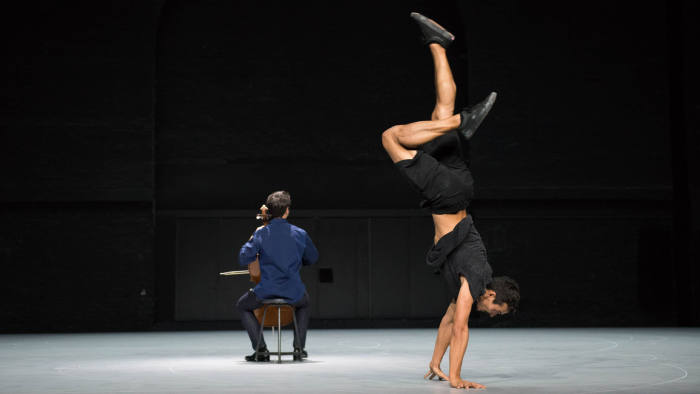Words by Katie Hagan
The idiom ‘lost in space’ typically refers to something that occurs sporadically or very rarely. In the case of Anne Teresa De Keersmaeker’s Mitten Wir Im Leben Sind (“In the Midst of Life”) set to Bach’s six cello suites, it was the choreography that was completely lost on the Sadler’s Wells stage.
De Keersmaeker has turned to Bach’s music repeatedly throughout her career. This particular interpretation features cellist Jean-Guihen Queyras, a enigmatic, willowy figure whose music carries the dancers along. His is a crucial presence which holds this often loose performance together.
Throughout the piece there is palpable synergy between the cellist and the dancers, especially the dancer in the second suite, whose movements showcases the real technique, grace and consideration that underpins pedestrian contemporary choreography. This suite was indeed the highlight of the night.
Aside from this part, the evening was underwhelming and flat. De Keersmaeker made several fleeting appearances, performing the same choreography that actually did a good job at sewing each suite together. But however pleasing these clean transitions might have been, it didn’t make up for the patchy choreography that was lacking in gravity. Whilst her small bunny-hops gave way to some light-hearted chuckles from the audience, it achieved little else.
The staging itself was nothing other than reminiscent of the white room in Charlie and the Chocolate Factory; a forceless, pale expanse in which the only thing haphazardly stapling everything together was the cellist.
It was hard to know what to expect when it came to this piece. And in my opinion I passionately believe a different, more intimate space would have made for a more compelling, engrossing performance. It would have given the ‘everyday, pedestrian’ movement some purpose and context. A smaller space would have enabled a more concentrated performance to emerge. Sadly – and frustratingly – on the Sadler’s Wells stage everything became diluted. It was a total wash out.
These kinds of questions – of the influence of space and place – are vital territories which the dance world needs to explore still. This piece could have accomplished this and much, much more.
Image: Anne Van Aerschot


